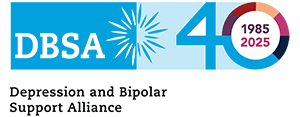
Self-harm is something I’ve lived with since I was 13 years old. I’m almost 24 now. I’ve been a mental health advocate since I was 18, but this is my first time writing about self-harm. I’ve been afraid of what opening up would mean for me, and I’ve been afraid of triggering people.
If you’re struggling with self-harm, please reach out to a trusted friend or loved one. It can be hard to find the words you need to explain your feelings, but recovery is possible. I also know the impact my behavior has had on my loved ones, so I hope to answer some questions about self-harm and make it less scary for those on the outside. Together, we can heal.
The Beginning
If the summer between seventh and eighth grade were a montage, it would look like this:
Crying in the bathroom. Problems with body image, boys, flaky friends. And a grandpa dying of brain cancer.
All my problems are in my head. That’s not true, of course. Some of the problems are between me and other people. But no one can see the proof. I can’t even see the proof. It feels silly to be so upset over something that’s only in my head. I need visible proof on my body. I need something I can point to and say, “I hurt. Look here. Here’s how much I hurt.”
This was my introduction to self-harm. My rationale would evolve over the years, but my basic reasoning stayed the same. I had emotional pain, but I was never taught that emotional pain was legitimate. I needed something to show for it.
Another reason I self-harm is for distraction. Living with chronic depression and generalized anxiety disorder, it’s easy for me to get caught up in my head. Self-harm gave me something physical I could care for, and it became addictive.
The Deception
The behavior escalated.
My sister is a nurse. Potential nurses go through intense training, a comprehensive exam, intense clinics, and countless hours of studying. She needed to practice a head-to-toe exam. I freaked out. I couldn’t lift my shirt up. I couldn’t show my belly or hips. There were old and fresh self-harm marks. No one knew yet. I threw a fit and left the room.
I reached out to her while writing this piece. I couldn’t remember the type of exam she was doing. I asked if she remembered when she was in nursing school, practicing for some exam when I freaked out and wouldn’t let her practice on me. She knew the situation I was talking about right away. Before this, I thought only I had engrained memories about my self-harm.
Looking back, I was wrong when I felt so alone. There were people around me who cared, who I could have reached out to.
Dr. Laves
The self-harm continued through college, although less frequently. I started attending DBSA support groups. One of my most challenging symptoms is isolation. I felt like no one could understand what I was going through. DBSA support groups taught me I was wrong. Every time someone said something, at least one other person would say, “Yeah, I’ve been through something similar.” I became part of a community of like-minded, caring individuals on the path to wellness.
I also started receiving therapy at my university’s counseling center. For the first time, I had a provider I actually clicked with, Dr. Karl Laves. But when I wasn’t feeling relief from it, I still felt guilty about the self-harm.
He told me sometimes self-harm doesn’t need to be a major red flag or a sign that someone is suicidal. Sometimes, it can be a coping strategy. And although there might be “better” or “healthier” strategies, loved ones shouldn’t always panic at the sight of self-harm. He said providers can see the meaning or purpose of a behavior without freaking out. Providers can trust people who self-injure to explain what the injury does for them.
I reached out to Dr. Laves while I was writing this piece. I asked him if I had remembered what he said correctly. I had. It was a life-changing perspective for me. I didn’t have to feel guilty, ashamed, weird, or broken. I could keep this coping strategy while I worked on developing other strategies that worked better for me and didn’t leave behind physical marks.
Coping Strategies
I’ve found a few strategies. The reasoning behind self-harm can be complex, so not every strategy works in every situation. I’m still working to find more to add to my list.
Jigsaw Puzzles. I love working jigsaw puzzles. Happy, sad, anything in between. I’ve also found it can be a useful distraction when I want to self-harm. Sorting through the pieces gives my hands something to do.
Red Pen. This is a strategy I thought was silly before I tried it a few times. I use this strategy when I have repetitive negative thoughts about myself. The thoughts are often focused on just a few words. I use a red pen to write these words where I would usually self-harm. It allows me to get the words out of my head and into the “real world.” Then, I can wash them off.
Napping. This sounds counterintuitive, but when I get overwhelmed by external situations (like work, a busy schedule, or an unfortunate change of plans), I like to take a nap. I guess it’s like turning a computer off and back on. Sometimes it can be difficult to calm down enough to fall asleep, so I like to use progressive relaxation.
Five Senses. Sometimes I self-harm to calm myself down if I feel a panic attack coming on. I’ve found that using the five senses grounding strategy can often be just as effective.
Today
I’m still not healed. I haven’t found the perfect alternatives yet, but I’m trying every day. It does get better. I went from self-harming nearly every day in eighth grade to averaging maybe once every couple of months now. Self-harm is an addictive habit, and that’s one of the reasons I advise against it.
But, if you’ve already gone down that path, there is hope. It’s a work in progress, but it’s progressing. And, if you’re a loved one, you can take comfort in providing the best support you’re able to.
Healing is a group process; we can do it together.


